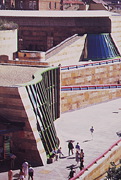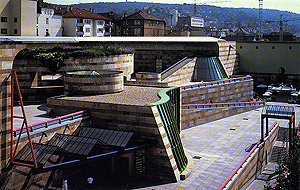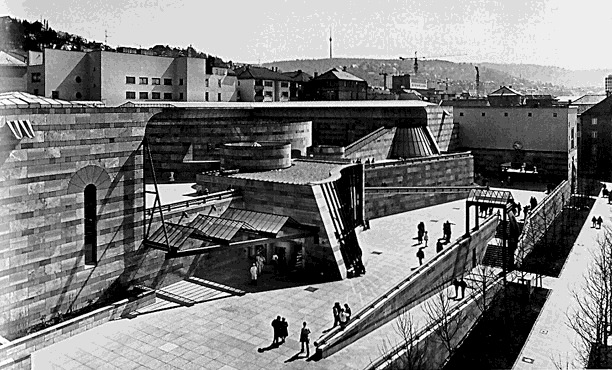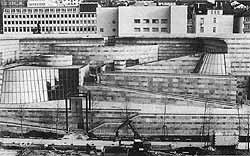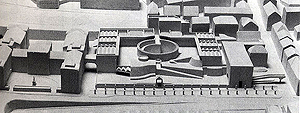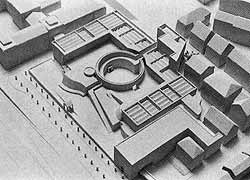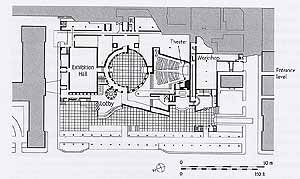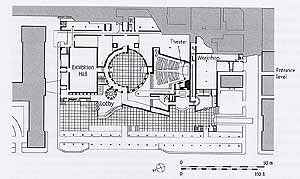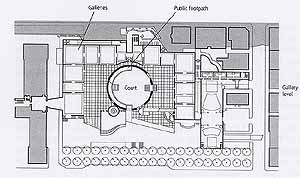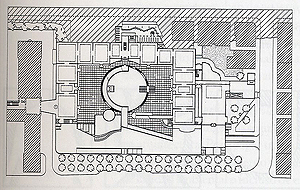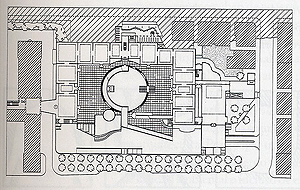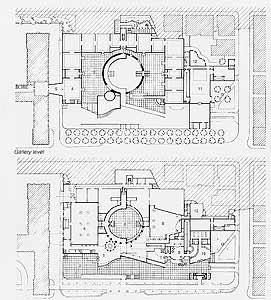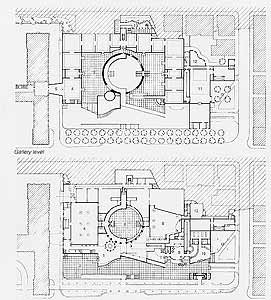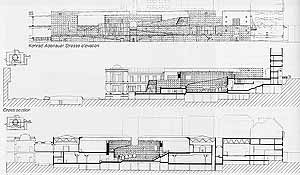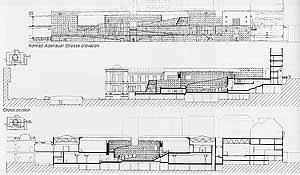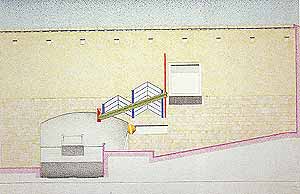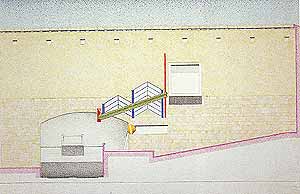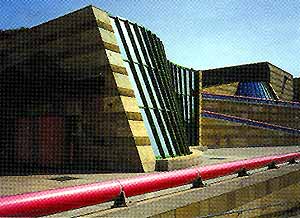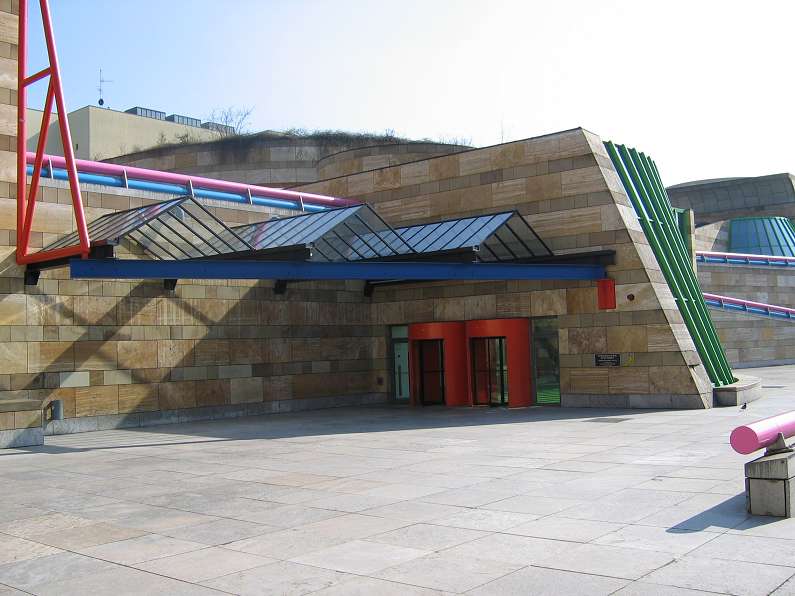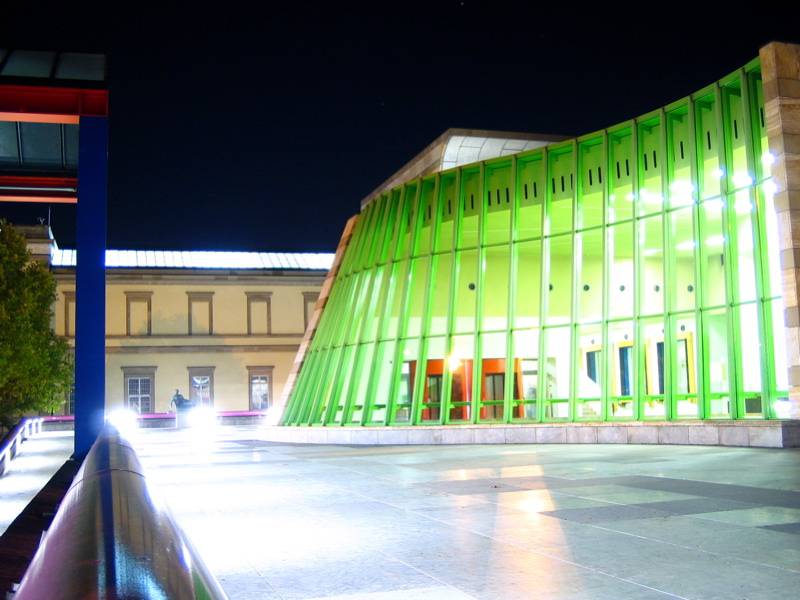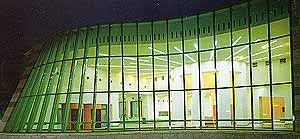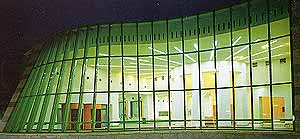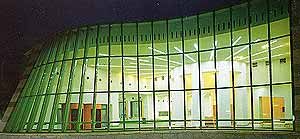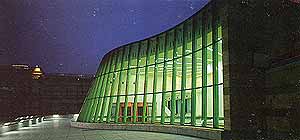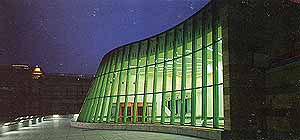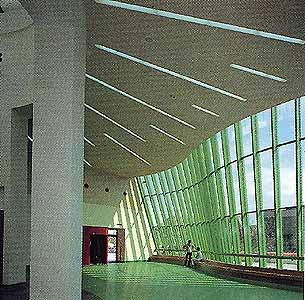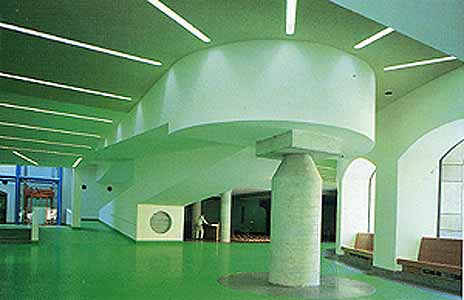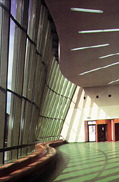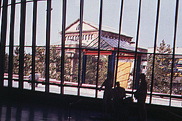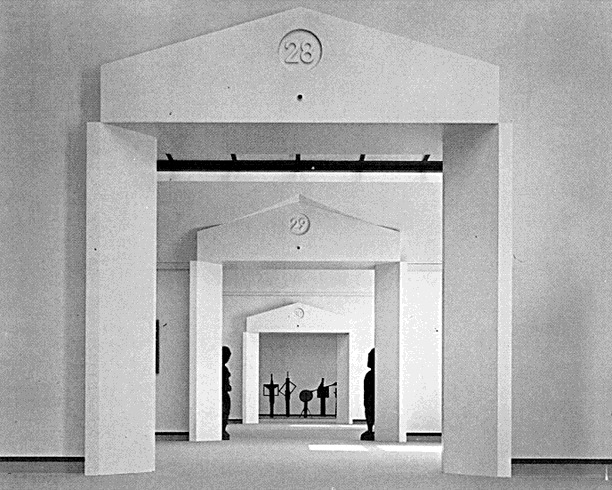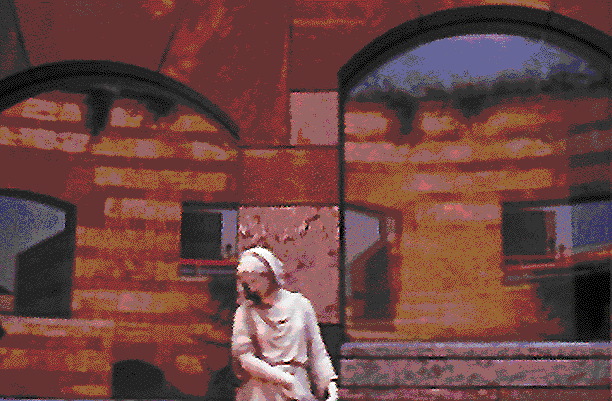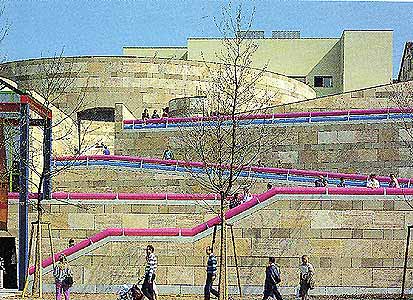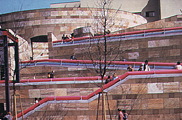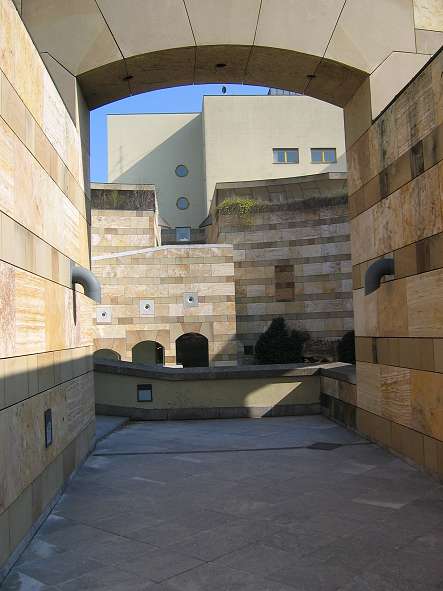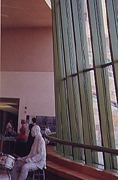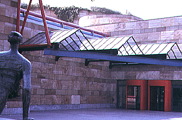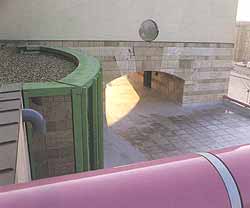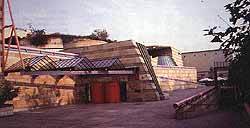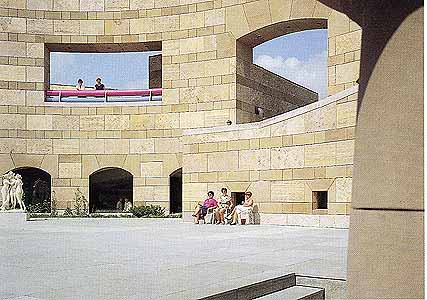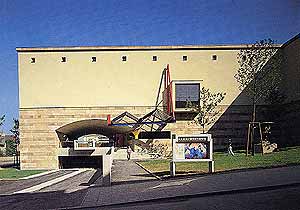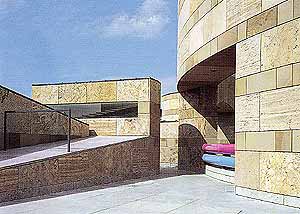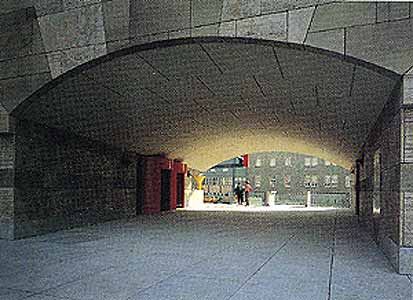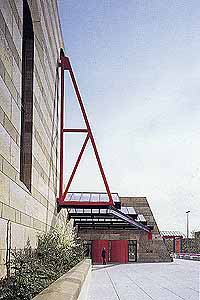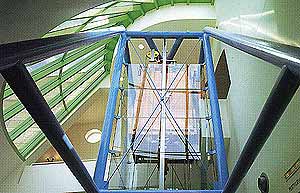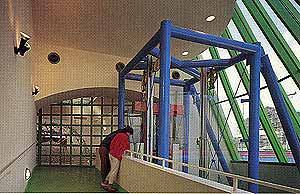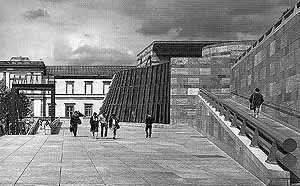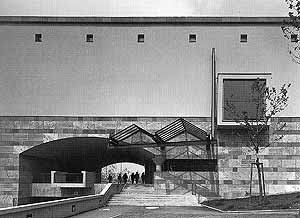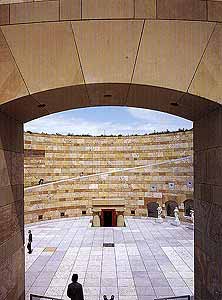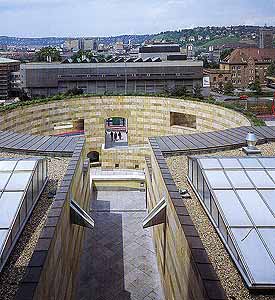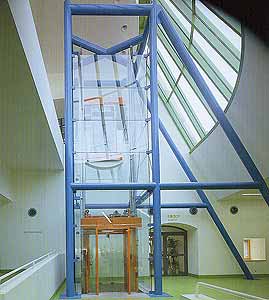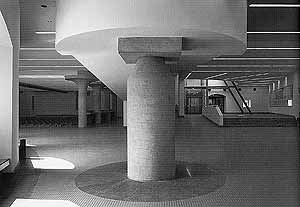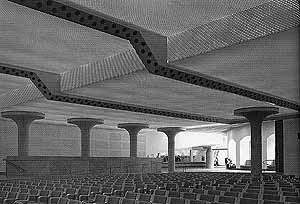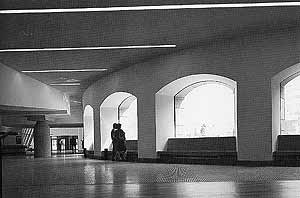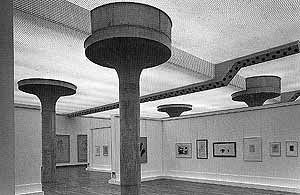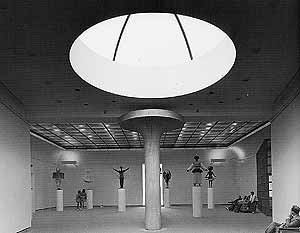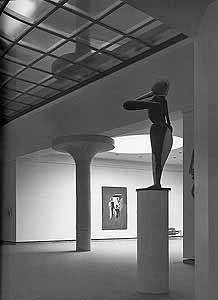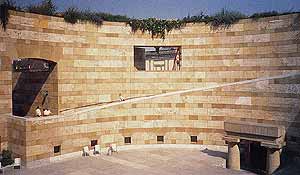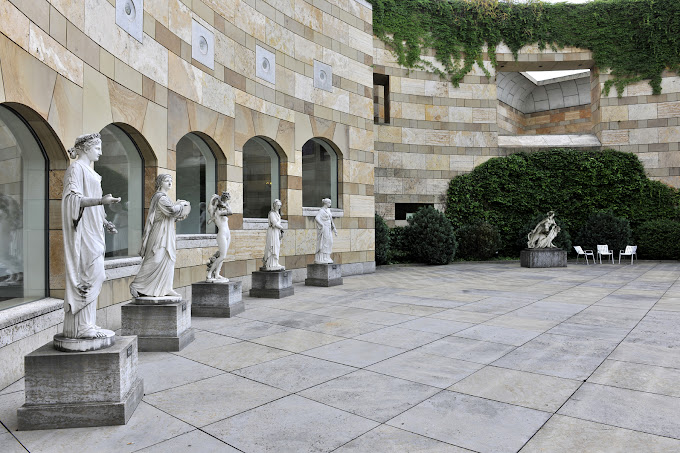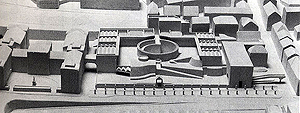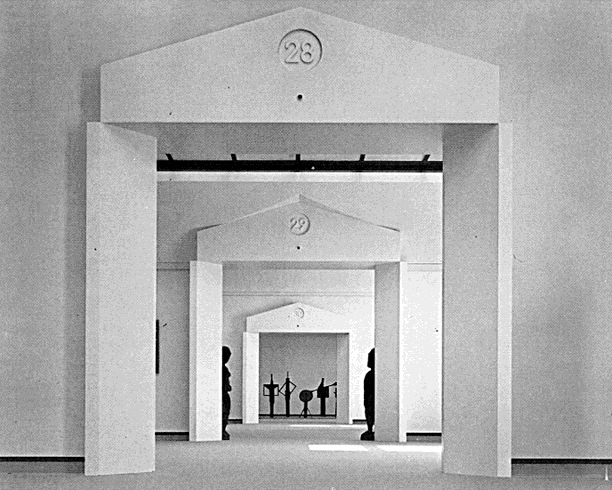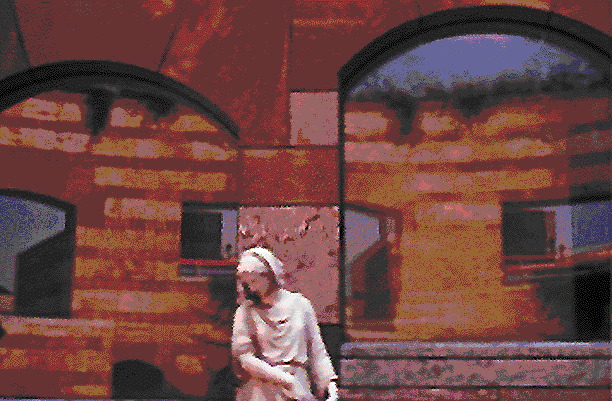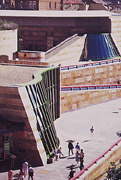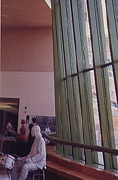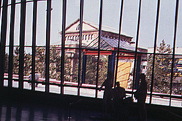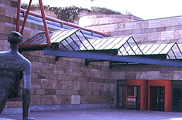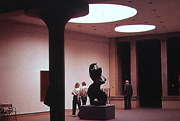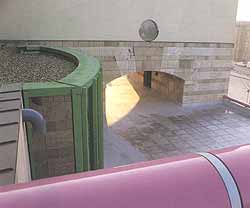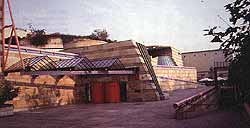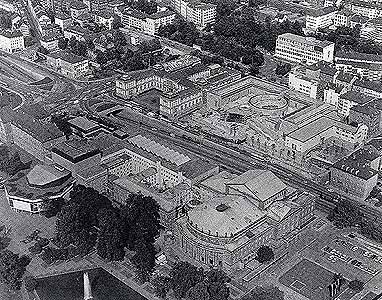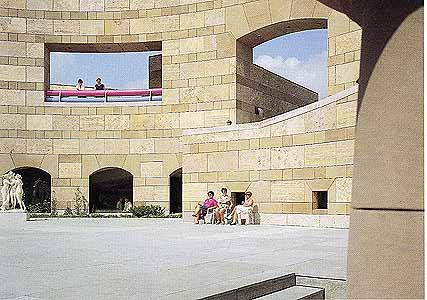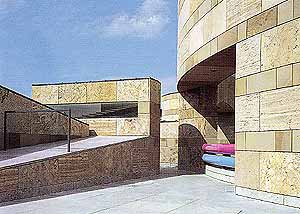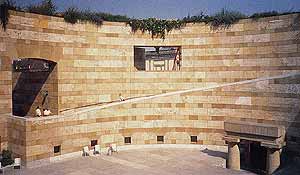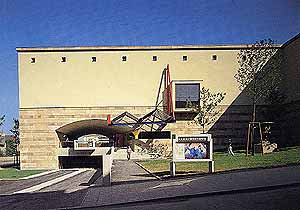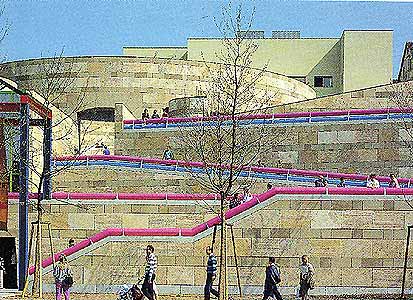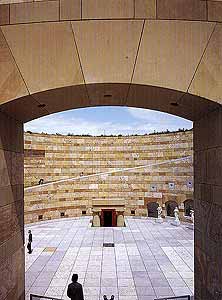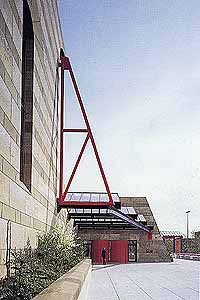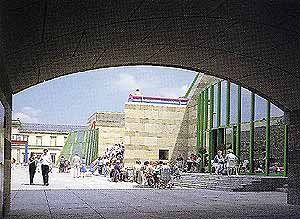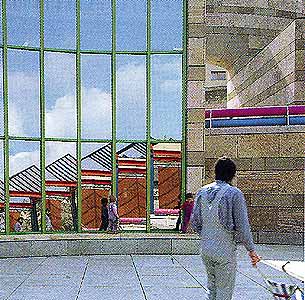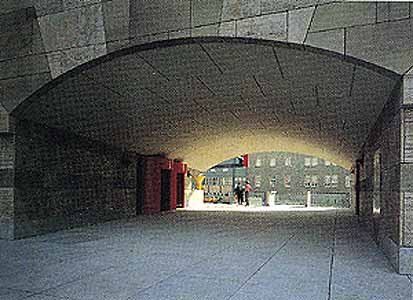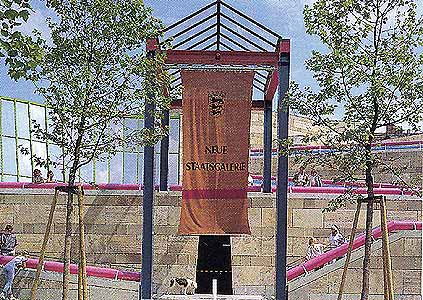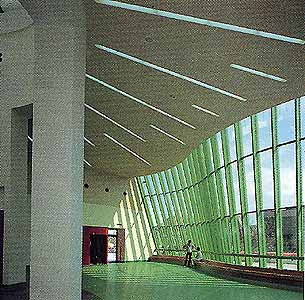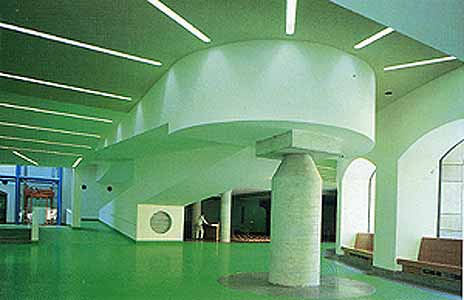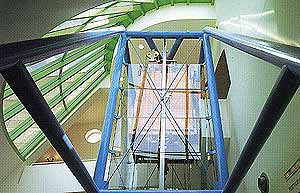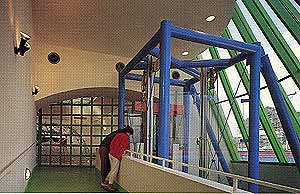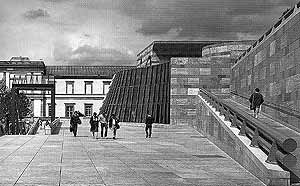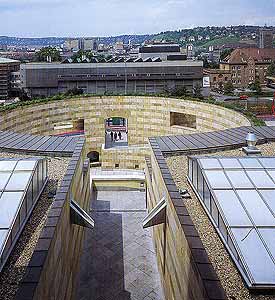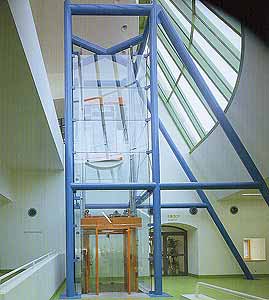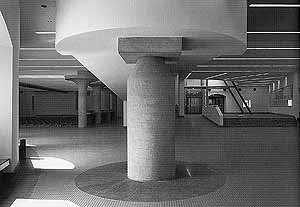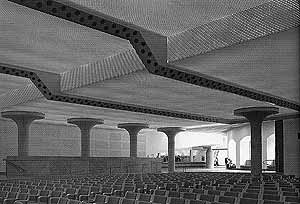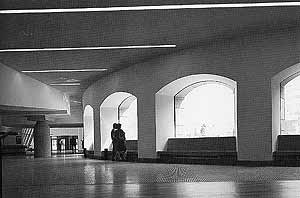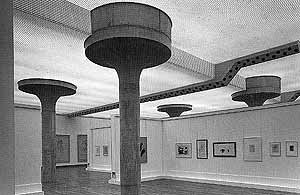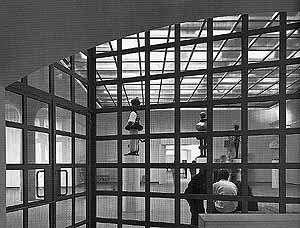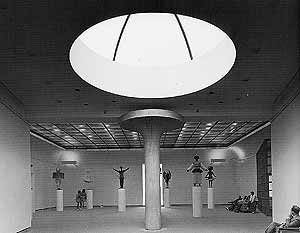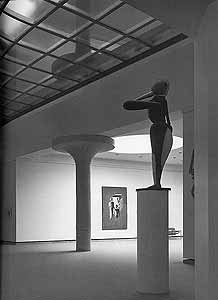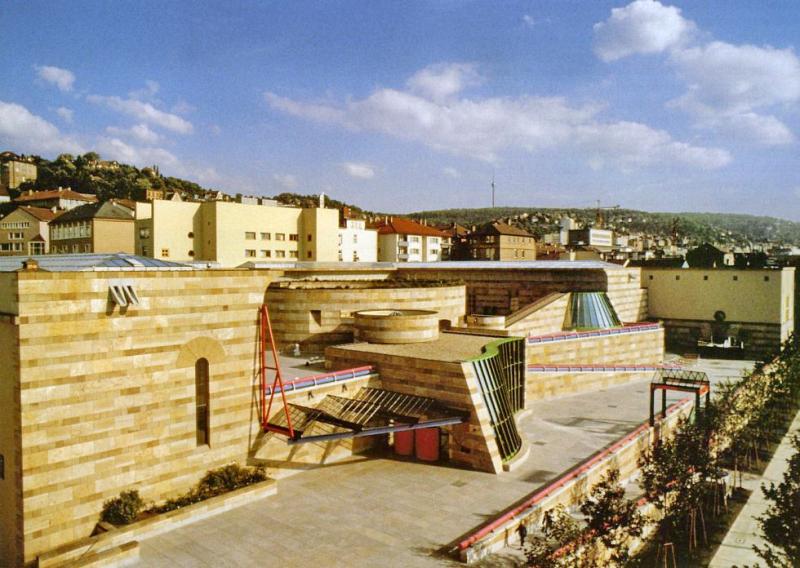
Galeria de Arte de Stuttgart
Stuttgart Staatsgallery- 1977 - 1984
- WILFORD, Michael
- STIRLING, James
- Stuttgart
- Alemania
- Enlace de la página oficial del museo, en inglés, con información sobre su historia, diseño y su actual estado y colecciones [25-12-2013]
- Enlace de la página oficial del museo, en inglés, con información sobre su historia, diseño y su actual estado y colecciones [25-12-2013]
- Artículo informativo sobre el museo - "plataforma arquitectura" en inglés [25-12-2013]
- Artículo informativo sobre el museo - "plataforma arquitectura" en inglés [25-12-2013]
- Enlace web con información principal (english) [08-12-2013]
- Enlace web con información principal (english) [08-12-2013]
- Enlace con información sobre la ciudad de Stuttgart, donde se encuentra. [08-12-2013]
- Enlace con información sobre la ciudad de Stuttgart, donde se encuentra. [08-12-2013]
- Enlace web oficial de la ciudad, con información de las facilidades de la ciudad incluída la Galería [08-12-2013]
- Enlace web oficial de la ciudad, con información de las facilidades de la ciudad incluída la Galería [08-12-2013]
- Enlace de wikipedia en castellano [08-12-2013]
- Enlace de wikipedia en castellano [08-12-2013]
- Wikipedia [22-6-2015]
- Wikipedia [22-6-2015]
- Página oficial de la Galería de Arte de Stuttgart:Este enlace te llevará directamente al sitio web oficial de la galería, donde puedes encontrar información actualizada sobre exposiciones, eventos y actividades.
- Visit Stuttgart - Galerías de Arte - Este enlace te proporciona una visión general de las galerías de arte en Stuttgart, incluida la Galería de Arte de Stuttgart, y te ofrece recursos útiles para planificar tu visita.
- Stuttgart Tourismus - Arte y Cultura: Aquí encontrarás información turística sobre arte y cultura en Stuttgart, incluyendo detalles sobre la Galería de Arte de Stuttgart y otras atracciones culturales en la ciudad.
CURTIS William. J., La arquitectura moderna desde 1900. Edit. Phaidon. Hong Kong, 2006.
Pág.589-613. “ El pluralismo de los años 1970”
Desde luego, la fragmentación y la estratificación eran técnicas con una larga genealogía moderna en la pintura, la escultura, la fotografía y el cine, así como la arquitectura, y podían servir para muchos propósitos expresivos...
...La Neue Staatsgalerie (‘Nueva galería estatal’) de Stuttgart (1977-1984), obra de James Stirling (con Michael Wilford) también se servía de la fragmentación para recoger la escala y la textura de los alrededores, para encauzar el movimiento, pero en este caso las piezas estaban ensambladas en un armazón prácticamente neoclásico que respondía a las alas simétricas del viejo museo contigua, y que tenía un tambor cilíndrico al aire libre en el centro. A partir de comienzos de los años 1970, Stirlinghabía empleado alusiones y metáforas históricas cada vez más patentes.
La propuesta no construida para el centro cívico de Derby (1970) ya manifestaba su fascinación por la relaciones figura/fondo y entre los espacios y los sólidos urbanos, Y por la idea de tratar los monumentos existentes como objets trouvés. La yuxtaposición de ambientes exteriores y objetos aislados continúan el proyecto para el museo de Colonia (1985), y en este caso la planta baja de la catedral vecina se reformulada como una plaza rehundido dentro de una secuencia de episodios vagamente surrealistas.
Evidentemente, Stirling también estaba buscando inspiración en cosas tales como las antiguas plantas romanas, con sus secuencias de salas curvas fluyendo unas dentro de otras (el supuesto carácter de collage de la ‘fragmentada’ planta de la Villa Adriana fue muy estudiado en esa época), y en su proyecto para la Staatsgalerie de Stuttgart todos esos rasgos parecían haber confluido.
La Neue Staatsgalerie era una obra inclusiva a la que Stirling se refería en estos términos:<< representativa y abstracta, monumental e informal, tradicional y tecnológicamente puntera.>> el edificio tenía la justa cuota de complejidades y contradicciones, pues combinaba las tradicionales con una planta libre, un cofre de mampostería con un acristalamiento de “ alta tecnología “, y una sintaxis cubista con una figura centralizada; coqueteaba con ese tema tabú en Alemania que era la monumentalidad clásica, pero insistían en la interpretación democrática, incluso populista, de la institución, colocando para ello un espacio urbano en el centro e hilvanando un sinuoso recorrido público a través del tambor, de uno a otro lado.
La planta estaba modelada evidentemente siguiendo el tipo del Altes Museum en Berlín, de Schinkel, pero es como si la cúpula y el pórtico de este venerado prototipo se hubiesen “cortado “ dejando una versión moderna de una ruina perforada aquí allá por piezas de alta tecnología e ingeniosas citas y alusiones históricas. Stirling parecía colocar la idea de un museo de arte moderno en algún punto situado entre un palacio para el pueblo y un supermercado para el “consumo“ de la cultura. Las marquesinas de acero, brillantes y como juguetes, y las barandillas gordas de colores recortadas contra el chapado marrón de bandas de piedra, curiosamente material, pretendían ser un ornamento “fácil para el usuario “. Las inflexiones de la fachada principal, con unas curvas onduladas que indicaban la presencia de la entrada, y una rampas que señalaban el camino a lo largo de la secuencia siguiente, recordaban los anteriores recursos de Stirling para resolver situaciones análogas y el tema de la promenade architecturale de Le Corbusier. El gran vacío cilíndrico era tanto un pariente de las formas del pistón del proyecto Siemens como un derivado de la composición clásica. Así pues, lo “moderno “ y lo antiguo se enfrentaban deliberadamente pero sin fundirse, como una técnica de “ bricolaje “. De un modo bastante curioso, Stirling seguía insistiendo en hablar de sus proyectos en función de una lógica programática.
La Staatsgalerie (Terminada en 1984) abordaba muchas cuestiones que estaban en el aire en esa época (el contexto, el clasicismo, el collage, la tipología, el ornamento o la policromía), y también hacia sus “guiños “ a lo posmoderno. A fin de cuentas, no obstante, se apoyaba en una disciplina moderna del proyecto. La actitud de Stirling con respecto a sus predecesores modernos era manierista en toda la extensión de la palabra; tomaba recursos de los edificios canónicos y los colocaba entre ‘comillas’, invirtiendo otras tocando las expectativas sobre su uso habitual. Por ejemplo, las marquesinas de tubo de acero eran “ robadas “ de la Cité de Refuge de Le Corbusier, estaba en cabeza abajo; el acristalamiento de la galería sinuosa comparte luces verdes situada junto a la entrada parecía ser una reinterpretación transparente de la capilla curva de la Tourette o de las figuras serpenteantes de Aalto; el ala trasera es una pieza, rehecha, de la cercana Weissenhofsiedlung. El resultado era una manipulación sofisticada y culta de elementos estilísticos más que una transformación profunda al servicio de una nueva visión. Para algunos críticos, el edificio de Stirling tenía un atractivo aspecto de collage, pero para otros las formas parecían resueltas en excesivo rigor y carentes de convicción expresiva. Era precisamente la ausencia de tensión ética en este ingenioso despliegue de erudición lo que llevó a un autor a referirse a la Staatsgalerie como << virtuosismo en torno a un vacío>>.
---
FRAMPTON Kenneth., Historia crítica de la Arquitectura Moderna. Gustavo Gili. Barcelona, 1987.
Pág.284-316. “Lugar, producción y escenografía; práctica y teoría internacionales desde 1962”
Y lo que ocurrió con Graves sucedió igualmente con muchas otras figuras que hasta entonces habían ocupado posiciones ligadas a la etapa final del Movimiento Moderno : no sólo James Stirling, Philip Johnson y Hans Hollein , sino también otros conversos más tardíos a la postura posmoderna como Romaldo Giurgola, Moshe Safdie y Kevin Roche . En todos los casos, y en diferentes grados, el discurso de un historicismo ‘desmaterializado’ se abrazó de manera consciente y prácticamente se mezcló al azar con fragmentos modernos . El resultado más frecuente fue una 'cacofonía' inconclusa y aparentemente sin sentido en la que el arquitecto perdió el control de su material . Esta versión actual de la 'desaparición del autor' quedó patente en la obra de Stirling , especialmente en la Staatsgalerie de Stuttgart . Aunque es el edificio público más distinguido de la etapa final de Stirling -surgido de tres diseños 'neoclásicos' sucesivos para museos alemanes, proyectados en la segunda mitad de los años setenta-, es también un diseño extrañamente mezclado y conflictivo . Con una estructura de hormigón armado, con unos meticulosos detalles y con un acabado de sillería finamente labrada, la Staatsgalerie , aún lejos de ser escenográfica, es, no obstante, atectónica en su expresión general ; es decir, está más cerca de Hoffmann y Asplund -sobre todo del crematorio construido en 1939 por este último en el cementerio del bosque de Estocolmo- que de los preceptos vanguardistas y constructivistas que inspiraron los inicios de la carrera de Stirling . Las diferencias entre Stirling y Asplund son igualmente significativas, en particular la sustitución del sentido de la civitas liberal que tenía Asplund -su aprecio por una identidad cívica igualitaria- por el 'populismo clásico' de Stirling . Me refiero a la convicción de éste, derivada sin duda de la gestión museística actual, de que el museo no es sólo una institución edificante, sino también un lugar de entretenimiento y diversión . Esto último explica que la monumentalidad general de la Staatsgalerie se haya logrado con la mediación de ciertos episodios de influencia constructivista , de un muro cortina espectacularmente ondulado, de enormes barandillas tubulares, de edículos simbólicos de ligeros tubos de acero, y en realidad de toda una plétora de elementos como de juguete pintados de colores brillantes y diseñados para atraer al hombre de la calle.
Un planteamiento similar se afianzó en otras obras museísticas de Stirling: las ampliaciones del Museo Fogg en Harvard y de la Galería Tate Londres. Por lo que respecta a la Tate, es como si la tradición de la cultura tectónica se hubiera ido consumiendo ante nuestros ojos debido a la moda del redescubierto dibujo arquitectónico en color . Otra forma de 'desaparición' consistió en eliminar completamente el edificio, en sepultarlo en la tierra de manera que se convirtiese en un interior introvertido antes que en un testamento de la virtud cívica . El Museo de Mönchengladbach (1983), de Hollein , y la nueva sede del Parlamento de Australia en Canberra (terminado en 1988), de Giurgola no son más que dos ejemplos de este enfoque.
---
MONTANER, J,M., La Modernidad superada. Arquitectura, arte y pensamiento del siglo XX. Edit. Gustavo Gili. Barcelona, 1997.
Págs. 159-180.... "En todo caso, las relaciones temáticas, estructurales, plásticas y conceptuales entre obras de distintas artes pueden llegar a ser infinitas. Se ha hablado del paralelo entre espíritu geométrico de Rene Descartes, el jardín clasicista francés y la lógica paradójica de las tramas teatrales de Jean Racine; o se ha comparado muchas veces la divina comedia de Dante con una catedral gótica, estableciendo que santo Tomás de Aquino, Dante y Giotto constituyen, respectivamente, la expresión teológica, poética y figurativa de una misma idea. Se han podido comprara las estructuras duales, en espiral, de tres obras distintas de los años 70, en las cuales el recorrido y movimiento del espectador siempre se desarrolla en la superposición de dualidades: el dibujo y proyecto de escultura Island Project de Robert Smithson (1970), El edificio de la ampliación de la Staatsgalerie en Stuttgart de James Stirling (1977-1985) y la novela Se una notte d’inverno un viagatore de Italo Calvino (1979). Y la performance de danza titulada “Celebration in the city place” dirigida por Marilyn Wood, utilizando las plantas del seagram como escenario iluminado por la luz interior, puso en evidencia el carácter transparente y armónico de la obra de Mies Van der Rohe...."
---
PEEL Lucy, POWELL Polly, GARRET Alexander., “Encargos épicos” en Introducción a la Arquitectura del siglo XX. CEAC. Barcelona, 1990.
Págs.108-111."La ampliación de la National Gallery de Londres levantó discrepancias durante años, hasta que, por fín se le concedió el trabajo a Robert Venturi, y como era americano, también hubo algún alboroto. La ampliación de la Tate Gallery de Londres por James Stirling; la Clore Gallery construida para albergar la Tumer Collection (1987), también hicieron correr mucha tinta en artículos polémicos en revistas y periódicos y debates televisivos. Sin embargo Stirling, ya había hecho sus pruebas con la ampliación de la Stuttgart Staatsgalerie (1977-84) que atrajo a los visitantes tanto como la exposición que albergaba."
---
TRACHTENBERG, HYMANN. Arquitectura. De la Prehistria a la postmodernidad.Edit. Akal. Madrid, 1990.
pág. 711. "La Galería de Arte de Stuttgart y el nuevo teatro de cámara en Stuttgart por James Stirling (con Michael Wilford) es otra obra clave del segundo modernismo que esta fuertemente afectada por su dificil situación. El complejo gira "teatro y museo" desde una colina al motorista que acelera por la autopista de 8 vias que hay a sus pies. Su mensaje no necesita inscripción, siendo el edificio, según las palabras engañosamente suaves de Stirling, "un collage deelementos antiguos y nuevos... para evocar una asociación con el museo" Sus tres alas principales (que albergan galerías de pintura maravillosamente iluminadas y proporcionadas) repiten la planta en forma de U del antiguo museo de revival renacentista de al lado, pero presenta al ojo una poderosa masa egipciana. Sus muros cerrados están partidos, parecen pilonos en el centro, y están revestidos con una sólida mampostería, cuyas bandas de arenisca y travertino, que cruzan todo el complejo, no transmiten la idea de Egipto sino la de Italia medieval. (Este punto histórico está subrayado por una prominente ventana toscana románica). El patio enmarcado por las alas en forma de U, se desborda con un ordenado revoltijo de formas poderosas, que se adelantan más allá de la U hacia el borde de la terraza sobre la que se eleva el museo. Las rampas majestuosas, guarnecidas con barandillas tubulares rosas y azules, recuerda el mundo antiguo de Egipto, palestrina, Tirinto, Micenas e incluso la Acrópolis (con su primera galería de pintura con forma de U) y al mismo tiempo las famosas rampas desiguales de la Villa Saboya de Le Corbusier. Una rotonda abierta al patio de esculturas, coge otra vez dos vias históricamente hacia el mundo de Adriano así como a Schinkel, cuyo primer museo de Europa en Berlín, se centraba en una rotonda para escultura. La entrada del museo tiene una forma libre; su ondulante frente de vidrio con armazón verde brillante evoca simultaneamente a Paxton, Gropius y Aalto, mientras que sugiere inequívocamente la presencia de un gran piano y la función de realización de las artes del complejo. El entremezclado segundo modernismo de imágenes "antiguas y nuevas" de Stirling consigue una gran intensidad en la entrada del complejo. La parada de taxis de alta tecnología, con columnas azules, dinteles rojos y techo de vidrio, es una versión futurista de la choza primitiva de Laugier, remontándonos más allá de Egipto y Micenas hasta la Prehistoria mítica. Entre todos los grandes estilos del arco iris de estilos históricos sólo parece faltar el Renacimiento, pero está en el antiguo museo binario de al lado.
Aunque la mayor parte de los seguidores del Segundo Modernismo, como hemos visto, emplean el collage historicista para crear metáforas de lugares y de otros significados, el estilo de Stirling parece único en su extensión e integración de referencias provenientes de la historia de la arquitectura.
El grandioso collage histórico de Stirling proporciona al visitante una rica variedad de experiencias visuales (aparte de los objetos que alberga); entre ellas hay dos cruciales. Una es la vista principal del museo, o desde la carretera o desde las aceras dominadas por la presencia del tráfico. En ambos casos el edificio compite con éxito con su enemigo de ruedas con formas audaces que suben la colina y desaparecen en una impresión imprecida de bandas fluidas. Otra vista del edificio implica una experiencia incluso dramática que se aleja del mundo del automóvil y se adentra en las profundidades desafiantes de la historia en sí. El proyecto requería que Stirling proporcionara un lazo pedestre en lamitad del bloque entre la autopista y la calle aterrazada que hay detrás del museo. Transformó esta obligación en una ventaja con un camino en zigzag que sube hasta la rotonda, donde una escarpada rampa circuferencial gira en dirección de las agujas del reloj a través de un semicírculo, permitiendo una visión plena de la exposición de escultura- pero no el acceso a ella- antes de girar para salir a la calle superior a través de un tunel en los muros partidos.
El circuito de Stuttgart, un golpe maestro del urbanismo, que lleva al peatón en un camino nemoténico a través de su collage de historia arquitectónica y lo adentra en el corazón del museo de arte en sí, sugiere algo que Stirling tenía muy a mano; el gran circuito de calles y plazas dieciochescas de Bath, Inglaterra, en particular el Circo y el Royal Crescent, donde el camino ascendente piruetea hacia dentor y hacia fuera en círculos y medios círculos con vistas espectaculares. Igual que Bath es una creación esencialmente inglesa.
El museo de Stuttgart, con su reluciente policromía italianizante y sus empujes de masas, parece Butterfield, y a Stirling se le ha llamado Butterfield del Segundo Modernismo... EL museo de Stuttgart forma una narrativa arquitectónica sensual tan llena de transformaciones dramáticas y sorpresas como la Catedral de Well o el Banco de Inglaterra de Soane.
Muchos segundos modernistas emplean la técnica del collage historicista para crear metáforas de lugares y otros significados, pero no se puede comparar ningún otro edificio del Segundo Modernismo con el toque magistral y la profundad urbanística del Sttutgart Museum. El nuevo estilo de Stirling es único en su extrema amplitud de referencias y su integración y le distingue en Inglaterra y el mundo entero."

